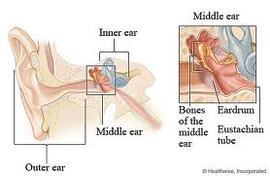The Vestibular System - This page is under construction.

Vertigo and Dizziness
Vertigo is the sensation that you are spinning or that the world around you is physically spinning. The sensation is often provoked with head movement or rolling in bed and resolves temporarily on its own.
Dizziness or lightheadedness characterizes the sensation that you may faint or fall due to a feeling of unsteadiness. Dizziness is often associated with headaches, nausea, and/or giddiness. The causes vary greatly and can be due to certain medications, dehydration, low blood pressure, or sensory overload (amusement rides or modern video games). Other physical conditions that may cause dizziness are neuritis or labrynthritis, which occur in the inner ear and are often precipitated by a virus or cold. |
Benign Paroxysmal Positional Vertigo (BPPV)
BPPV is a disorder that causes vertigo, dizziness, and other symptoms due to debris that has collected in the wrong part of the inner ear. This debris, called otoconia, consists of small crystals of calcium carbonate (sometimes referred to as "ear rocks"). Otoconia are normally located
|
Balance Disturbances
Balance is dependent on three sources of information: input from the eyes, input from the muscles and joints, and input from the vestibular organs in the inner ears. All three of these sources send information from sensory receptors via nerve impulses to the brain. When one or more of these systems is weakened, unsteadiness, loss of balance, and even falling can result.
A physical therapy exam can help determine which system has been compromised and needs training. The findings of the exam then determine which specific exercises to prescribe in clinic and at home. |